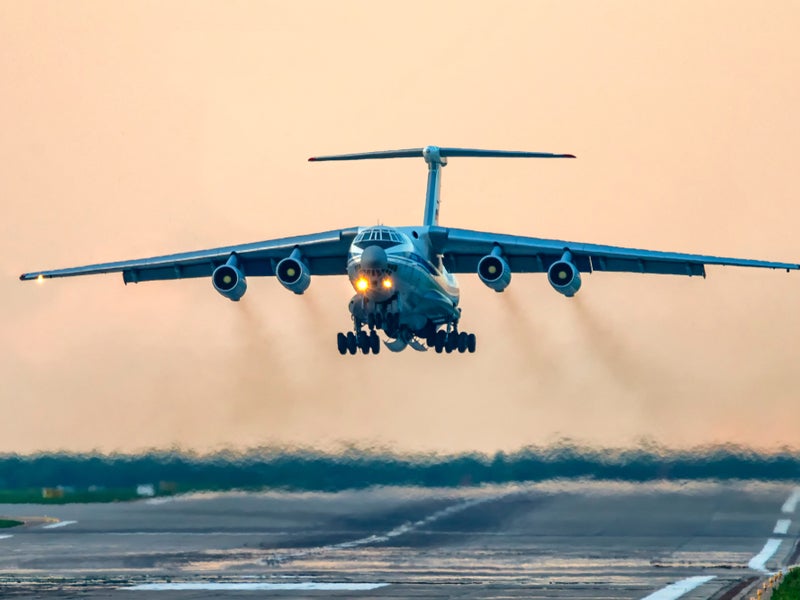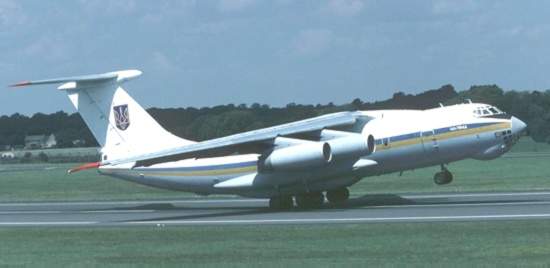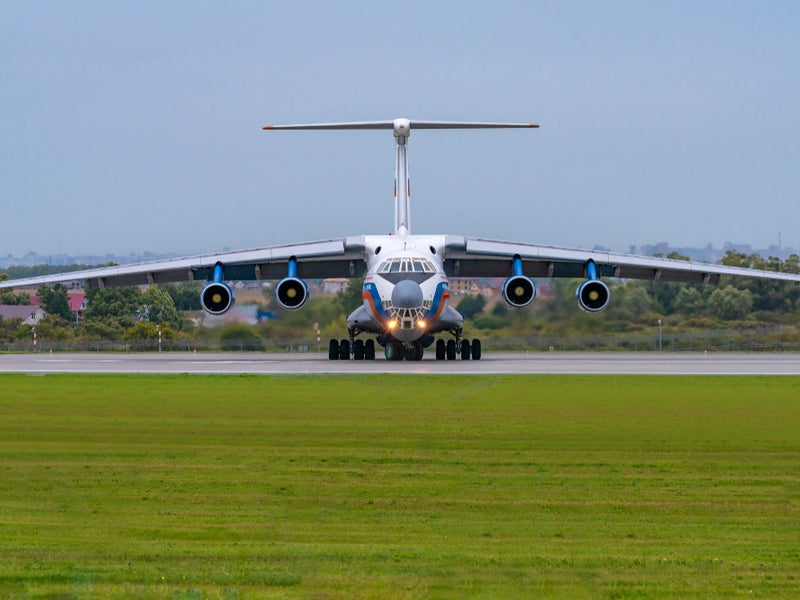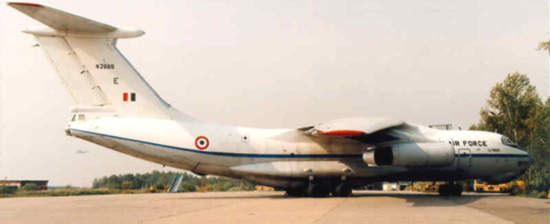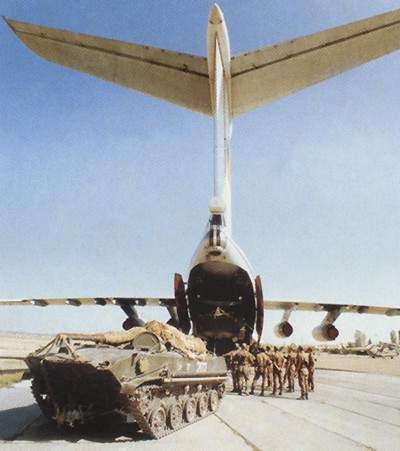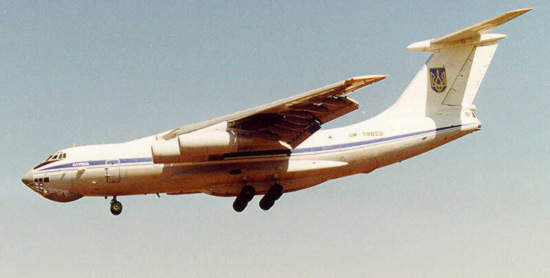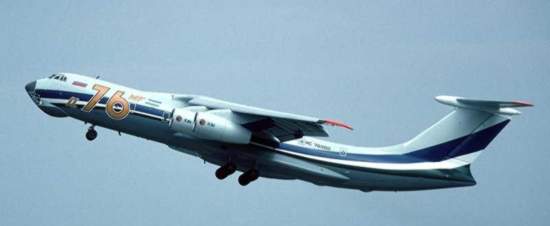Design features of the Il-76 (Nato ‘Candid’)
Cargo handling and weapon systems
The air-drop and cargo handling equipment is intended to load, unload and air drop paratroopers and cargo, make the optimum arrangement of the cargo according to the logistical demands of the mission and securely tie down the cargo.
“IL-76 is a medium-range military transport aircraft, also known by the Nato codename ‘Candid’.”
The equipment comprises a telpher (an overhead cargo system where the cargo can be suspended from an electrically powered rail), a roller conveyer, mooring / rigging, auxiliary parachute, and ambulance equipment.
The aircraft is equipped with a defensive aids suite, comprising radar warning, jammers, infrared flare cartridges, chaff dispenser and two guns with a fire-control radar. Aerial bombs or radio beacons are suspended from external bomb racks on detachable pylons.
Avionics and engines of the Il-76 medium-range transport aircraft
Onboard equipment is intended to execute airlifts and air drop missions by day and at night, in VFR and IFR (visual flight rules and instrument flight rules) weather conditions, as well as under hostile air defence conditions.
The integrated flight control and aiming-navigation system includes a compass system, ground surveillance radar, a central digital computer, automatic monitoring system, automatic flight control system, short-range radio navigation and landing system, IFF transponder, optical / infrared aiming sight and a ground collision warning system.
The Il-76M aircraft is powered by four D-30KP turbofan engines, mounted on underwing pylons and housed in individual pods secured on the engines.
Fuel is held in 12 integral tanks, which are isolated from each other. Fuel tanks are divided into four groups by the number of the engines. An inert gas system is used for protection against explosion.
Il-76 transport aircraft variants
There are several design variations, including the basic Il-76, Il-76M, Il-76MD, Il-78, Il-76-MF, and Il-76MD-90A. In terms of design, aerodynamic configuration and flight performance characteristics, the Il-76M version virtually resembles the Il-76 basic aircraft, but has a maximum payload of 47t, compared to 28t for the Il-76.
The Il-76MD variant has an increased flight range and service life. The power plant and systems are identical to those of the Il-76M. Structural changes have been made to its airframe only to accommodate the increased service life and increased take-off weight.
When operating from first-category concrete runways, the aircraft’s take-off weight has been increased from 170t for the Il-76M to 190t for the Il-76MD, mainly due to the increased fuel.
This enables a flight range increased by 40% with a maximum payload. The Il-76MD can be operated from unpaved runways in forward areas of operation.
The Il-78 ‘Midas’ is air-to-air refuelling aircraft based on Il-76MD. It has a total fuel tank capacity of 145, 500l, including 109,500l in wing tanks and 36,000 in fuselage tanks.
The Il-76MF aircraft is a derivative of the Il-76MD, with the fuselage lengthened by 6.6m. The new PS-90A-76 engines give a 25% higher take-off thrust (16,000kgf) than the D-30KP engines on the MD variant.
The flight range is increased by more than 20%, for example, the flight range with a 40t payload is 5,800km (compared to a range of 4,800km for the IL-76MD).
In August 2007, the Russian Air Force revealed the Il-76MD-90, which has four Perm PS-90A76 turbojet engines and upgraded Leninets Kupol-76M avionics.
The Il-76MD-90A military transport aircraft is an upgraded version of the Il-76MD. The aircraft can be used to airlift military personnel, equipment, cargo and weapons. It completed initial factory flight tests in October 2019.
The Indian Air Force (IAF) ordered three Il-76MD aircraft fitted with the Phalcon AEW (airborne early warning) system produced by Elta of Israel. The first aircraft was delivered in May 2009, while the second and third aircraft were handed over in March 2010and mid-2011 respectively.
In August 2005, Jordan ordered two Il-76MF variants and China placed an order for up to 38 Il-76 transport aircraft in September 2005.
A proposal was made by the IAF in 2018 to modernise its ageing Il-76/78 transport fleet.

